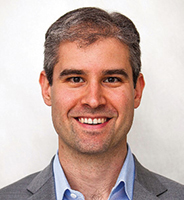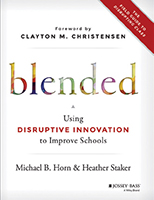Shaping Culture for Blended Learning
November 01, 2015

Have you ever walked into a school that on paper sounded amazing, but in practice just seemed ‘‘off’’? The students weren’t doing what they should be, the teachers looked tired or maybe the facilities were messy.
After all the brainstorming and designing that goes into creating an education innovation are over, execution still matters most. And when the culture isn’t right or is uneven, the execution can fall apart.
Culture is one of those things that people tend to talk about in oblique terms. They suggest that an organization’s culture is just in the air of the place. ‘‘You know culture when you feel it,’’ one might say.
Edgar Schein, a professor emeritus at MIT, is one of the leading scholars on organizational culture. He defines organizational culture in these terms: ‘‘Culture is a way of working together toward common goals that have been followed so frequently and so successfully that people don’t even think about trying to do things another way. If a culture has formed, people will autonomously do what they need to do to be successful.’’
Culture is a critical part of the success of any blended learning program. A friend who works in blended schools once remarked to us, ‘‘Blended learning accelerates a good culture and makes it great, but it will also accelerate a bad culture and make it terrible.’’
Culture is especially useful — or toxic — in blended programs because blended learning goes hand in hand with giving students more control and flexibility. If students lack the processes and cultural norms to handle that agency, the shift toward a personalized environment can backfire. To not address the topic of culture is to not address one of the most important parts of designing a blended-learning program — indeed, it is to overlook one of the most important parts of any school.

Oliver Sicat was six months into his tenure as the head of USC Hybrid High School, a charter school in downtown Los Angeles, when he shared this on his blog earlier this year: “I am not talking about culture in the sense that everyone is walking in single-file lines. I am talking about holding students to high expectations for behavior and having rewards and consequences for every positive and negative behavior we don’t tolerate, without excuses. This is even more important if you are building for open-learning environments. How do we plan, model, train and hold students and staff accountable for the culture we want to create? We needed to prioritize this so learning could happen.”
Three school-based examples drive home his point.
Anacostia High School
In profiling Anacostia High School, a 697-student Title I school in Washington, D.C., which long has been one of the district’s most underperforming schools, a report by the American Enterprise Institute highlighted the school’s efforts to move to a blended-learning environment. The authors wrote about how the students used netbooks with an online portal that gave them access to an array of multimedia tools for learning and on-demand assessments that provided immediate feedback. The report talked about how students could log in with unique passwords so that teachers could track each student’s individual progress.
And yet, the authors wrote, as they were observing a class, they saw that students logged in not with their unique ID but with a generic one. Some students struggled even with that, and it took them up to five minutes to enter the password. Rather than use the online assessment capabilities, the teacher used paper worksheets. And when one student struggled to understand a word, rather than use the computer’s dictionary or Google, she walked over to a bookshelf and took her time flipping through a dictionary for help.
This represents a classic example of a program where leaders have left culture to chance, rather than aggressively shaping it. The school was not intentional about (1) identifying the range of problems and tasks that students, teachers and staff would confront in a blended setting; (2) appointing a team to find successful ways to solve or address those problems or tasks; and (3) asking them to solve those same problems repeatedly in that way to build and then reinforce the culture.
As a result, it was considered OK for students to take five minutes to log into the online portal at the beginning of class, to not use their unique ID or to use their scarce learning time by sauntering over to look up a word in a physical dictionary instead of an online one. No one had crafted the right processes up front, and as a result, the de facto culture was chaotic.

Gilroy Prep School
Contrast Anacostia High School to Gilroy Prep School, a charter school in Gilroy, Calif., which uses a lab rotation model.
At Gilroy, students know that once they walk into the traditional classroom, they must be in their seats within 12 seconds and working on the “Do Now” activity that is on the board. When students are in the computer lab, they have 15 seconds from when they walk in the door to put their headphones on and log into their software program. The result: Students know when they are in a learning environment, there should be no down time.
When Gilroy students rotate between different groupings five or six times during the day, they can take mini-recesses to relax, reset and get ready for the next task.
While the school’s culture may not suit everybody, the intentionality behind that culture has worked, as Gilroy Prep achieved the highest API score, 978 on a 1,000-point scale, in California for a first-year charter school in 2011-12.
Carpe Diem
Culture is key to the success of Carpe Diem, a chain of blended-learning schools that began in Yuma, Ariz. Carpe Diem’s founder, Rick Ogston, spent considerable time working with the school’s staff, teachers and students on how to respond to recurring situations to develop successful routines that prioritize learning and respect students’ needs.
In Carpe Diem’s model, students rotate to their next activity every 35 minutes. As such, efficient movement between activities and from nonlearning activities into learning ones was of vital importance.
Ogston showed his students how to march into school in the morning and then made his students march in again and again at the beginning of the school year, even if it was 100 degrees outside because his culture was ‘‘sacred.’’ No detail was too small to ensure that students behaved well and knew what routines to use.
This focus extended to teachers and staff. During our visit to Carpe Diem, we saw two students briefly put their heads down on their desks and take what appeared to be a nap. We asked Ogston whether a teacher was going to come over and do something, only to have him ask us a couple of questions in return: Haven’t you ever needed a break at work, a quick nap? If your supervisor came over and reprimanded you, would that be helpful to your productivity? Just like in work, he said, sometimes students need a brief break, and that is OK.
Ogston also helped students understand their responsibilities and what processes were and were not acceptable in response to challenges they would face as blended learners. The very process of helping students develop their own culture of success signaled to them that Carpe Diem was a place that respected them and wanted them to succeed.
Flexible, Too
Often, one of the biggest shifts in a blended-learning environment is that students in the same classroom will be engaged in different modalities and working on various skills. This climate requires that the culture support this flexibility.
The imperative for blended-learning teachers is to be able to shape the culture into one of high expectations and of student ownership of their own learning. When that culture is in place, a teacher does not become alarmed at seeing students conferring with peers during personalized-learning time. Although it may appear chaotic, if teachers invest in creating a strong culture with clear norms and expectations, then the culture will be quite structured, with clear methods to the madness.
The key is not that schools always should be quiet or always be boisterous, but that they should be silent when students need to be silent to maximize their learning and boisterous when noise and collaboration are in order.
About the Authors
Michael Horn is co-founder and executive director of education at the Clayton Christensen Institute for Disruptive Innovation. E-mail: mhorn@christenseninstitute.org. Twitter: @michaelbhorn. Heather Staker is president of Ready to Blend. This article is adapted with permission of the publisher from the authors’ book Blended (Jossey-Bass). Copyright © 2015.
Advertisement
Advertisement
Advertisement
Advertisement



